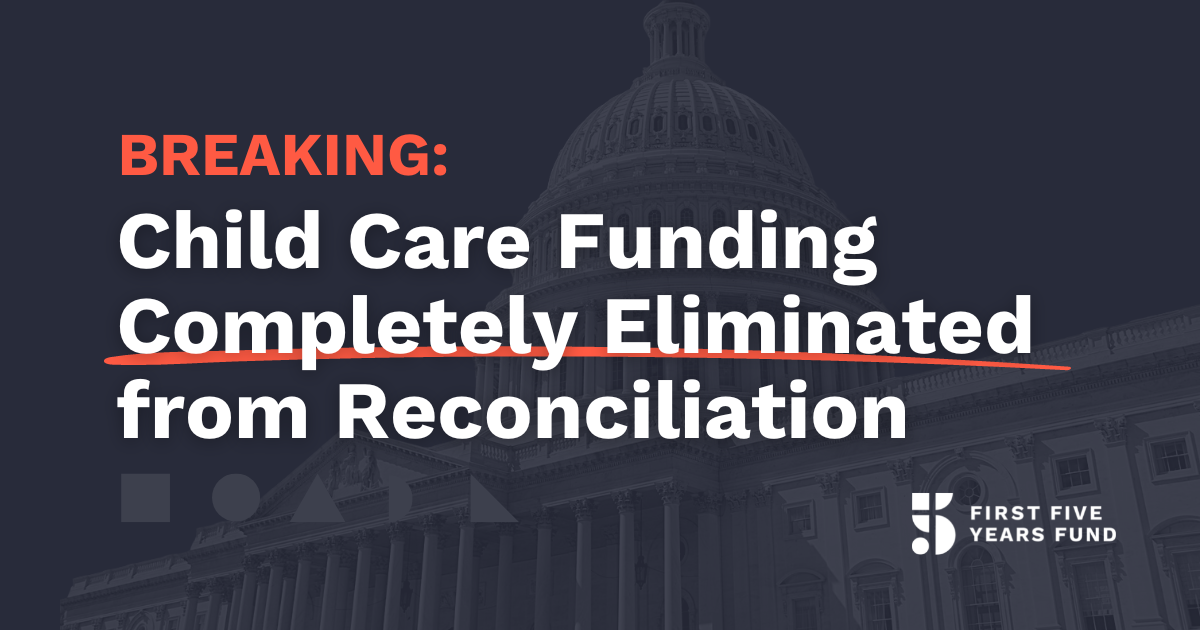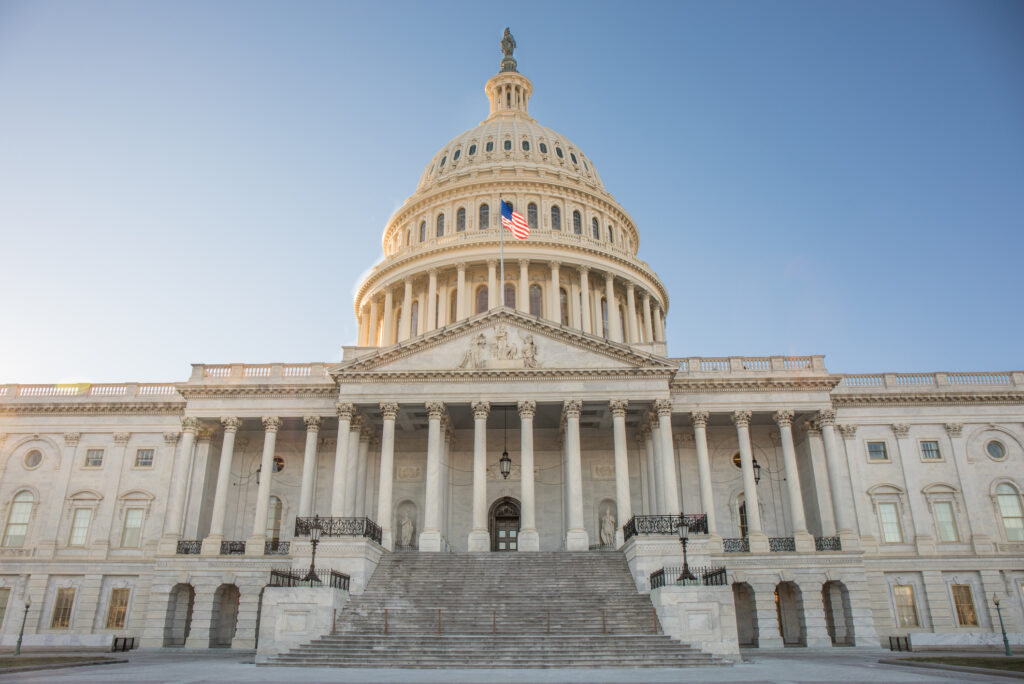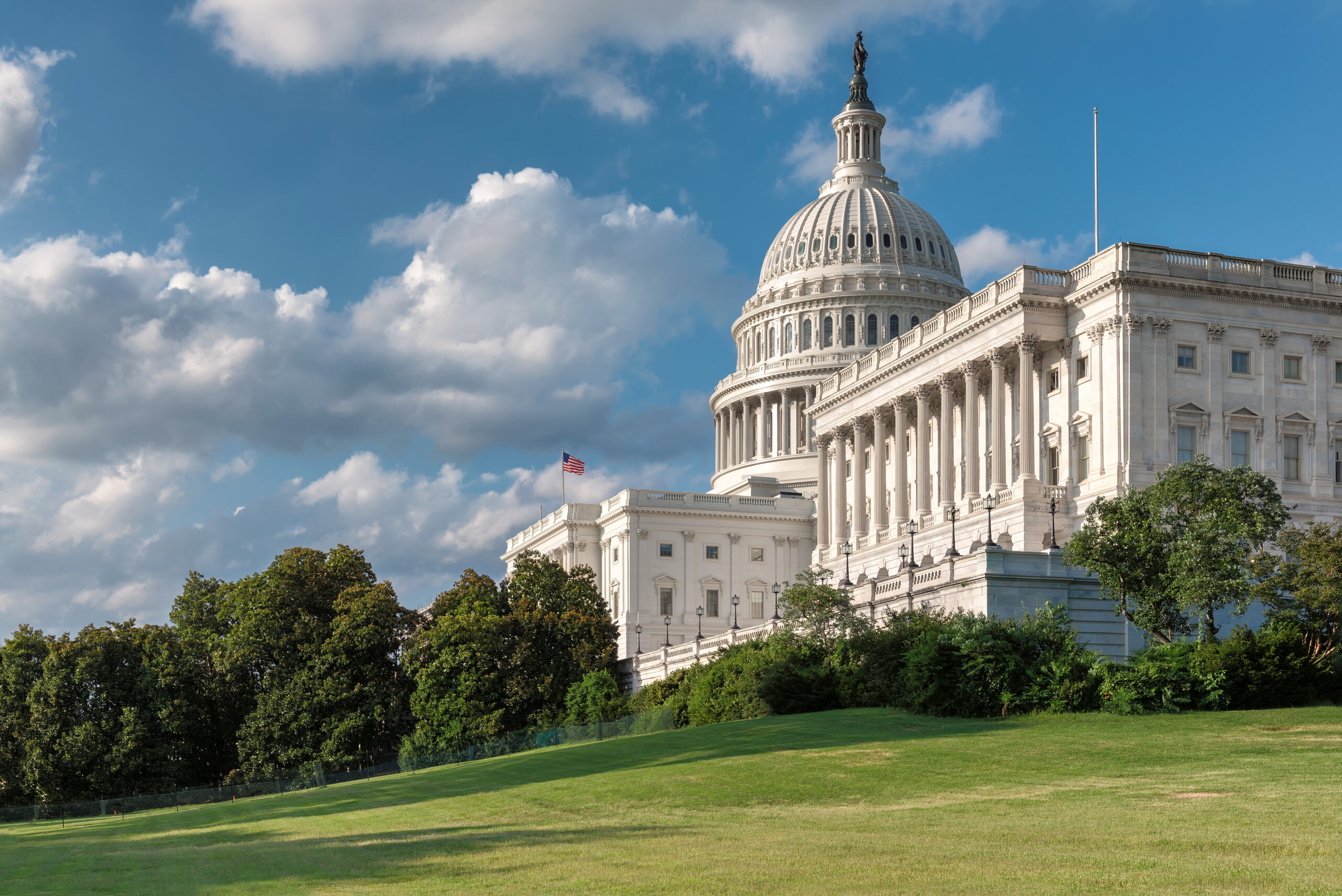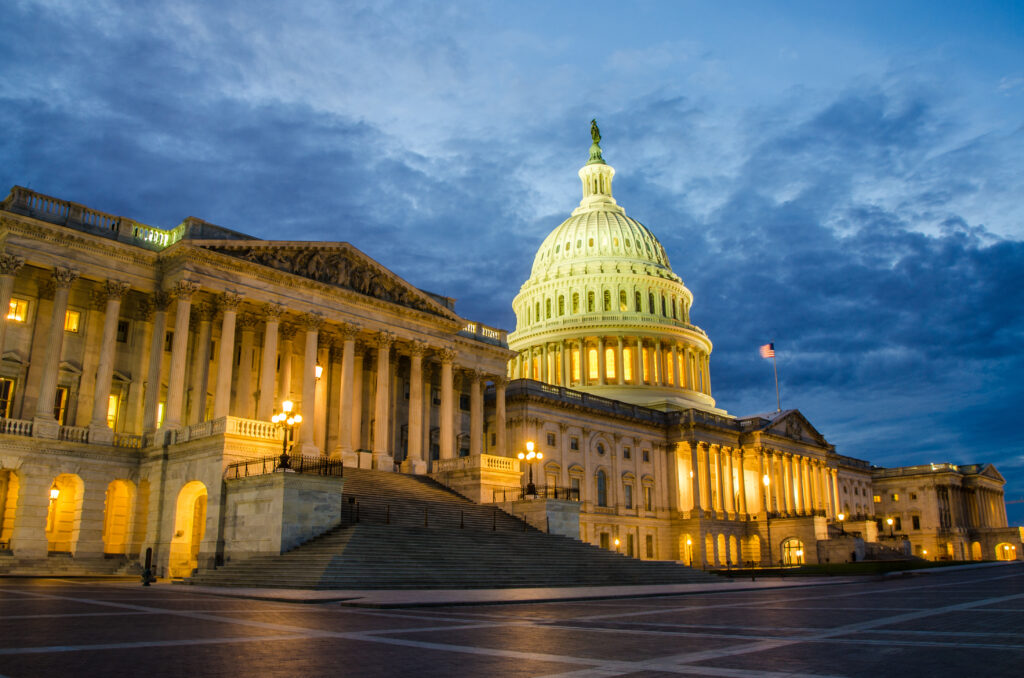After Elimination from Reconciliation, Congress Can’t Continue Ignoring Child Care Crisis

WASHINGTON — After the House passed budget reconciliation legislation that included nearly $400 billion in funding for child care and pre-K — among the largest proposed investments in the package and one of Congressional Democrats highest policy priorities — the Senate has today unveiled the details of the final package, which includes no funding at all for early learning and care. In response, First Five Years Fund (FFYF) Executive Director Sarah Rittling released the following statement:
“The budget reconciliation process may be coming to an end, but America’s child care crisis isn’t. It’s hard to imagine lawmakers would advance an effort to ease the burden of inflation on working families that fails to address the single largest expense many families face: child care. We need meaningful early learning solutions that will lower costs, increase supply, and support the early education workforce — before it’s too late. Congress must act to prevent the U.S. child care market from collapsing entirely, which would force completely avoidable economic hardship onto working families and businesses alike.”
A look at the facts behind the need for urgent, bold action on child care and early learning, including the upcoming funding cliff that may result in thousands of working parents losing their child care just days before the 2024 election:
- 15 million children under the age of six (66%) have all residential parents in the workforce, with roughly 11 million in non-parental care.
- Even before the pandemic, half of Americans lived in a child care desert with only one available child care spot for every three children in need of care.
- In one recent survey, more than 60% of parents said child care has gotten more expensive over the past year, and more than 40% of parents said child care is much harder to find.
- In half of all states, the average annual price of infant or toddler care in 2020 was over $15,000, with the average annual price in some states as high as $24,000. Nationwide, the average annual price for infant or toddler care was over $12,000.
- Meanwhile, the average hourly wage for a child care professional in a center is $12.24, or $25,460 annually.
- The federal financial relief program for child care providers that Congress passed last year runs out on September 30th, 2024 – just 36 days before Election Day — resulting in an estimated $48 billion funding cliff that, if unaddressed, will have disastrous consequences on the supply of child care.
- Families will face even higher prices and longer waiting lists.
- Child care providers who have been able to offer pay raises or bonuses to recruit or retain teachers will have to start making tough choices with less resources, risking a mass exodus of highly trained professionals leaving the field for better pay and benefits at places like Starbucks and Target.
- 92% of America’s child care providers who received this federal relief funding say these grants are what has kept their businesses open.
- 75% of providers say that the end of this funding will be devastating to their programs.
- Even with the relief provided by the child care stabilization program, two-thirds of child care providers are experiencing a staffing shortage that affects their ability to serve families; 52% of those with staffing shortages have been forced to serve fewer children while 37% have had a longer waiting list.
Voters Expect Action from Congress on Child Care
- Recent polling shows that voters in key electoral states understand the urgent need and economic necessity of addressing the child care crisis quickly — and they expected their lawmakers to include child care in this funding package.
- 61% of voters, including 67% of suburban women, say the only way to meet demand for child care and ensure its affordability is for the government to take action.
- 77% say that child care and early learning programs are a good investment of taxpayers’ money. Even 65% of those who say federal spending is too high believe child care to be a good investment.
- 77% also agree that their community would benefit from child care being more available and affordable. That includes 85% of urban residents, 76% of suburban residents, and 75% of those in small town and rural areas.
- 73% agree that more available and affordable child care will help the economy recover from the pandemic by helping people get back to work.
- 43% of all voters say they, a coworker, or a friend or family member has had trouble finding child care in the past several years. That includes a full third of all parents who say this applies to themselves.
FFYF’s Rittling continued: “In the time since negotiations on a reconciliation package began, the existential flaws of our child care market have been exacerbated, leaving countless working parents desperate to find care so they can go to work, and tens of thousands of providers struggling to find ways to keep their doors open. Today, the early learning system is perched on the edge of a catastrophic funding cliff that will affect America’s entire economy, resulting in higher prices and longer waitlists for families, while decreased wages push more early educators out of the field. Lawmakers have a responsibility to the American people to make good on their promises to invest in fixing what’s broken in our early learning system.”
The First Five Years Fund is the leading bipartisan federal advocacy organization working to ensure all children from birth through age five have equal access to affordable, comprehensive, high-quality care and education to support their healthy development and help them achieve their full potential in school and life. FFYF seeks to expand federal support for all early learning and care opportunities that are high-quality and focused first on serving those children most-at-risk. http://www.ffyf.org
###
Subscribe to FFYF First Look
Every morning, FFYF reports on the latest child care & early learning news from across the country. Subscribe and take 5 minutes to know what's happening in early childhood education.



